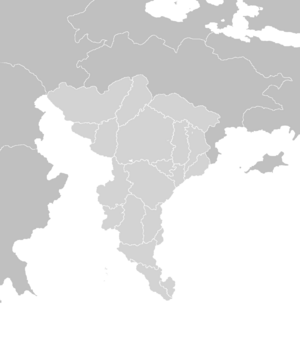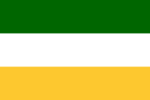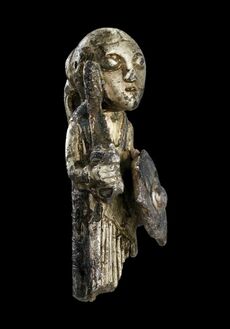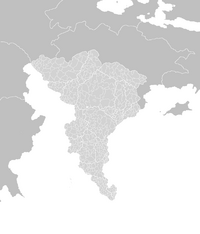Kentalis: Difference between revisions
No edit summary |
|||
| Line 1: | Line 1: | ||
{{Region icon Anteria}}{{NSNIcon|Kentalis}} | |||
{{Infobox country | {{Infobox country | ||
|conventional_long_name = The Republic of Kentalis | |conventional_long_name = The Republic of Kentalis | ||
| Line 224: | Line 225: | ||
{{Template:Sekidean info pages}} | {{Template:Sekidean info pages}} | ||
[[Category:Countries of Anteria]] [[Category:Countries in Anteria]] [[Category:Incomplete articles]] | [[Category:Countries of Anteria]] [[Category:Countries in Anteria]] [[Category:Incomplete articles]][[Category:Kentalis]] | ||
Revision as of 08:31, 8 September 2021
The Republic of Kentalis Republika Kentalis Република Кенталис Other:
| |||||||||||||
|---|---|---|---|---|---|---|---|---|---|---|---|---|---|
| Motto: "Служићу најдражем Кенталису" "I will serve my dearest Kentalis" Alternative: "Поносан сам што сам Кенталијанац" "I am proud to be Kentalian" | |||||||||||||
| Anthem: "The song of Požanovac" "Песма Пожановац" | |||||||||||||
 | |||||||||||||
| Capital and largest city | Polácica | ||||||||||||
| Working languages | Kental Ereskaneese Bisveni | ||||||||||||
| Recognized Regional Languages | |||||||||||||
| Ethnic groups | Kentalians Arakovacs Ereskans Bralea Bisveni Torvoneese Qazhshavans | ||||||||||||
| Demonym(s) | Kentalian Кенталиaц (Kental) | ||||||||||||
| Government | Parliamentary Representative Republic | ||||||||||||
• Prime-Minister | Viliem Ferjancić | ||||||||||||
• Deputy Prime-Ministers | Miloje Durashević Suzana Marković Đoko Sandić | ||||||||||||
• Vice President of the Council of State | Vojislav Nastasić | ||||||||||||
| Legislature | Estates-General | ||||||||||||
| Higher Senate | |||||||||||||
| Lower Senate | |||||||||||||
| Establishment | |||||||||||||
• Požanovac proclaimed | 794 | ||||||||||||
• Požanovacian split | 1561 | ||||||||||||
• Republic of Požanovac | 1799 | ||||||||||||
• Second Požanovacian Split | 1883 | ||||||||||||
• Republic of Kentalis | 19 December 1912 | ||||||||||||
| Area | |||||||||||||
• Total | 696,576 km2 (268,949 sq mi) | ||||||||||||
| Population | |||||||||||||
• 2021 estimate | 65,100,000 | ||||||||||||
• 2013 census | 64,843,589 | ||||||||||||
• Density | 93/km2 (240.9/sq mi) | ||||||||||||
| GDP (PPP) | 2021 estimate | ||||||||||||
• Total | 2,399 Trillion ACU | ||||||||||||
• Per capita | 37,426 ACU | ||||||||||||
| GDP (nominal) | 2021 estimate | ||||||||||||
• Total | 2,240 ACU | ||||||||||||
• Per capita | 34,408 ACU | ||||||||||||
| Gini (2021) | medium | ||||||||||||
| HDI (2021) | very high | ||||||||||||
| Currency | Sekinar (SEK) | ||||||||||||
| Time zone | UTC-6 | ||||||||||||
| Date format | dd-mm-yyyy | ||||||||||||
| Driving side | right | ||||||||||||
| Calling code | +31 | ||||||||||||
| ISO 3166 code | KNT | ||||||||||||
| Internet TLD | .KT | ||||||||||||
Kentalis or The Republic of Kentalis, Sometimes called the Republic of Požanovac is a nation located on the Požanovac Peninsula, which is on the coast of the Hagalaz Ocean. Bordering Shaunteville-la-patrici and Bretislavia. The country has 21 Provinces (Including the Polácica special district) and a population of 64 Million Kentalians. Language in Kentalis is divided between multiple slavic and Mohavic languages, those being Kental, Ereskaneese, Bisveni, Bralea and Arakovac, through Qazhshavan is also recognised as a minority language
The four largest cities in Kentalis are Polácica, Apačin, Datok and Živislavgrad . Polácica is the Capital of Kentalis and its largest city, here is where the parliament is located. The port of Apačin is the largest port in all of Thuadia, and the second largest of Anteria.
Kentalis has been a Parliamentary Representative Republic with a unitary structure since 1705. The country has a tradition of pillarisation and a long record of social tolerance, having legalised abortion and human euthanasia along with maintaining a liberal drug policy. Kentalis abolished the death penalty in Civil Law in 1770, though it was not completely removed until a new civil-rights chapter in the constitution was approved in 1783. Kentalis allowed women's suffrage in 1819, before becoming one of Anteria's first country to legalise same-sex marriage. Its mixed-market advanced economy had the twelfth-highest per capita income globally. Kentalis ranks among the highest in international indexes of press freedom, economic freedom, human development and quality of life, as well as happiness.
Kentalis is a member of many international organisations, like the Inner Sekidean Union, Anterian World Assembly, Trans-Anterian Climate Organization, International Association of Transportation Agencies and the International Football Association. By-far, the closest allies of Kentalis are Layfet, Zhousheng, Vultesia, Bakyern, Inner Sekidean Union countries and New Sebronia.
Etymology
The name Kentalis comes from the Kental words for land, Kopno and Chronicle, Anali. Kentalis can be translated as "The Land of Chronicles".
Kentalis has a standard naming convention, with most other languages having a fairly standardised variation of the name. In the Standard tongue, Kentalis is also called Požanovac (altho this is only the peninsula Kentalis is situated on), whereas the term "Kentalian" is used as the demonym and adjectival form.
In Kental
In Kental, the official names for Kentalis, the Kental language and a Kentalian citizen are Кенталис, Кентал, Кенталин (Kentalis, Kental, Kentalin in latinised form). However, colloquially the country is even by the Kentalians often referred to as Požanovac, although rarely outside the Požanac Province, where it may even be used as a pejorative term.
The plural Kentalises (Кенталисес) was used in many different connotations in the past due to the Republic of the two Kentalises, but since 1703 it has been rarely used.
History
(WIP)
Prehistory
The oldest human (Neanderthal) traces which were found on the Požanovac peninsula were found next to Živislavgrad, from what is believed to be about 200,000 years ago. However, the oldest confirmed traces of human activity are found in the North-eastern parts of Kentalis, which traces back to 15,000 years. These settlers were part of the now extinct Botenik Hunter-Gatherer culture, which were alreadz closely related to multiple slavic groups. Only in 2500 BC, the first farmers arrived from what is believed to be modern-day Zhousheng. Around 1000 BC, it is believed that the groups of Proto-Kental slavs spread further out to form more individual groups. The largest of these moved further south, while other groups stayed near Živislavgrad. During this time, it is also believed that the first Arakovac groups arrived from Qazhshava. As time passed, these groups spread out into multiple cultural groups, with the Požanovacs eventually becoming the largest, and the Ereskans in second. The first proof of a nation was found in modern-day Bisvenia, where a Bisveni kingdom lasted from around 200 BC to 20 CE. In 60 CE, Christianity began taking place in Požanovac, and eventually became the dominating religion.
The arrival of the Kingdom of Saint Jovan in 334 CE, also known as the first Ereskan Kingdom, upset the subtle ballance on Požanovac, and indirectly led to the creation of the Kingdom of Požanovac. Saint Jovan spread out across the North-Eastern part of Požanovac, and spread the Orthodox faith of Ereska with them. The Požanovac city-states could barely oppose them, and for 200 years the Ereskans controlled the Eastern part of Požanovac. In 521, however, the largest of the city-states in Požanac, Smevo, began an era of diplomatic conquest, quickly expanding and forming the kingdom of Požanac, in what today is the Požanac province.
Kingdom of Požanovac
Collapse
Požanovacian split
Re-Unification
Second Split
Modern Time
Geography
Geology
Climate
Climate Change
Temprature records
Nature
Rivers
Torug
Polac
Veja
Mountains
Protea Mountain Range
Mt. Lutec
Big and small Vojas
Politics
Political Culture
Political Parties
Government
Administrative Regions
Foreign relations
Main page: Foreign relations of Kentalis



